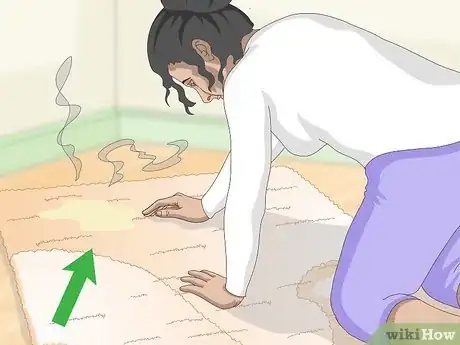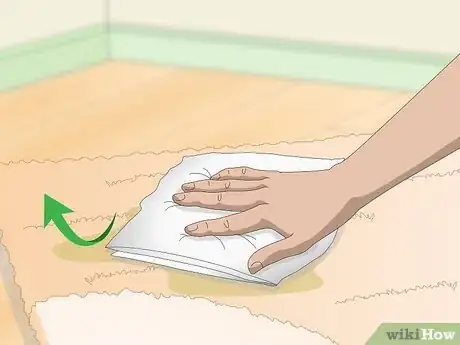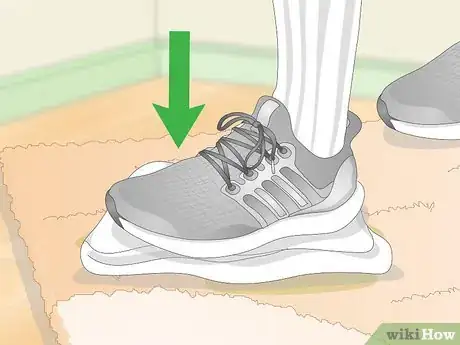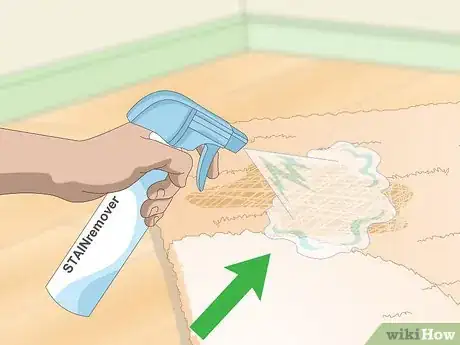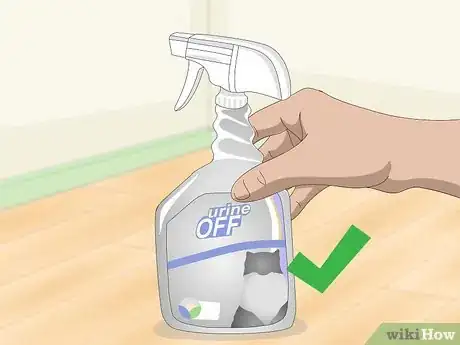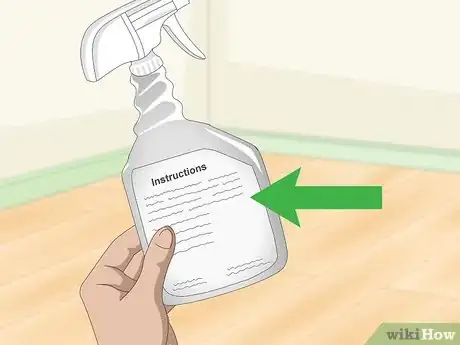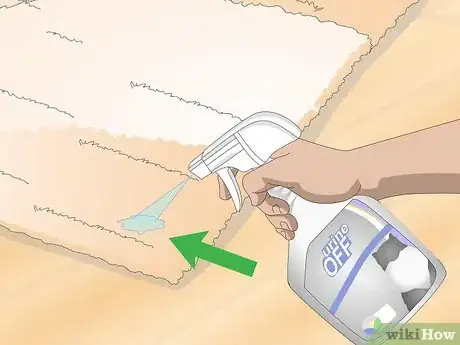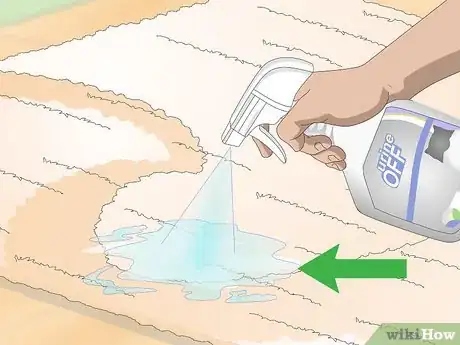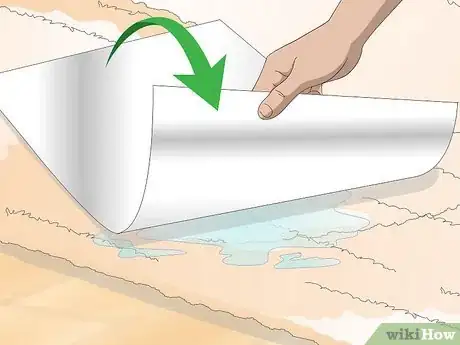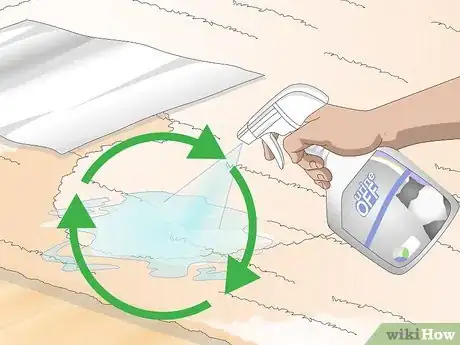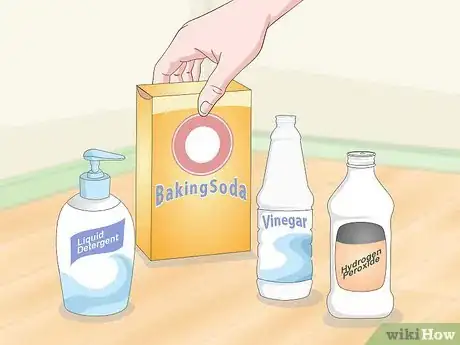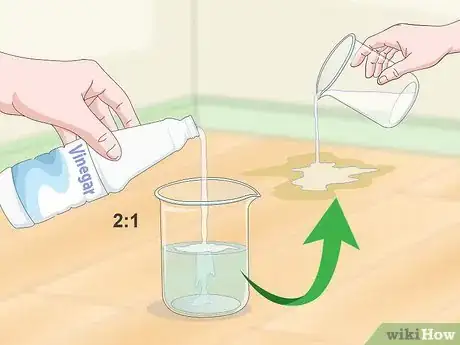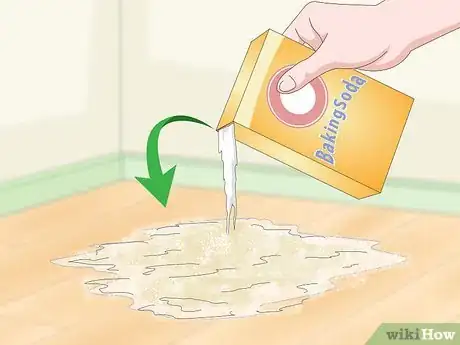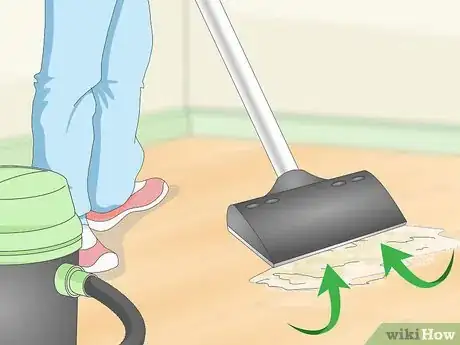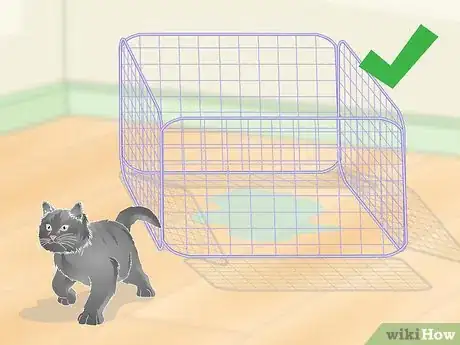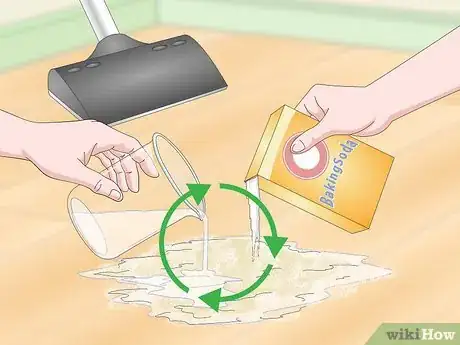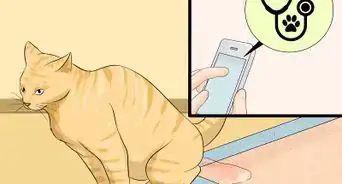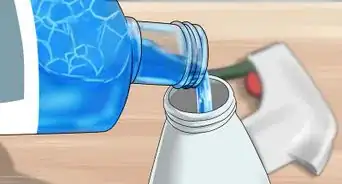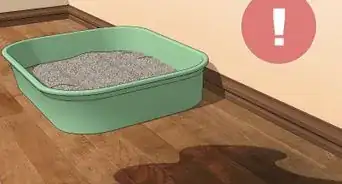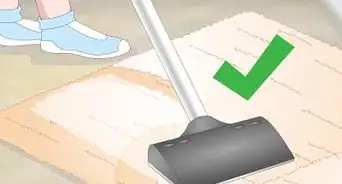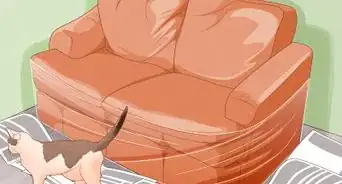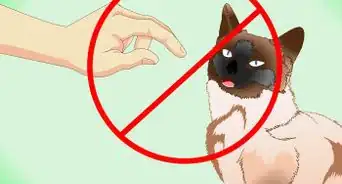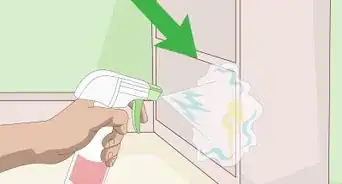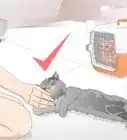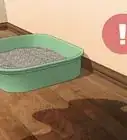This article was co-authored by Pippa Elliott, MRCVS. Dr. Elliott, BVMS, MRCVS is a veterinarian with over 30 years of experience in veterinary surgery and companion animal practice. She graduated from the University of Glasgow in 1987 with a degree in veterinary medicine and surgery. She has worked at the same animal clinic in her hometown for over 20 years.
There are 8 references cited in this article, which can be found at the bottom of the page.
wikiHow marks an article as reader-approved once it receives enough positive feedback. In this case, 84% of readers who voted found the article helpful, earning it our reader-approved status.
This article has been viewed 261,932 times.
Anyone who owns a cat has probably smelled the foul odor of cat urine at some point. The strong, pungent smell can radiate throughout a home and, if not cleaned up properly, can become even stronger over time and create unpleasant fumes similar to ammonia.[1] In addition to the unwelcome odor, cat urine can also leave stains, especially on fabric and carpet. Because it can be difficult to remove, learning how to clean cat urine effectively and quickly is key to keeping your home and furniture fresh and urine-free.
Steps
Locating and Blotting the Stain
-
1Locate the source of the odor. It's easiest to clean fresh stains that are still damp, since you can lift much of the urine from the affected spot. However, you may also come across dried stains. In these cases, the same procedures should be followed, even though the urine has had more time to break down and soak into the surface.
- The smell will usually lead you directly to the area where your cat has urinated, though you might have to feel around with your hands for a wet spot if it is on carpet or cloth-covered furniture, or a sticky spot if it has dried on tile, linoleum or hardwood floors.[2]
- You can also try using a black fluorescent light. These lights will show stains on furniture, walls, or carpet as yellow spots. You can purchase a black light rather inexpensively from pet stores or online.[3]
-
2Wipe up and blot. Using paper towels, blot up as much of the urine as possible if the surface is fabric or carpet. With these surfaces, there is a danger of the urine soaking into the fibers of the material. Use a gentle dabbing motion to blot up the urine.[4]
- If you're concerned about using a lot of paper towels for environmental reasons, use a cloth towel or rag or even old clothes that can be thrown away.[5]
- You can also use a wet vacuum to "suck up" the urine if you have one on hand. This will lift more of the cat urine than blotting. Do not use a steam cleaner as at this point in the cleaning process the heat can cause the odor to last much longer and be more difficult to remove.[6]
Advertisement -
3Avoid rubbing in the stain. Scrubbing away at the stain at this stage will only cause it to sink in deeper.
- If the stain is already dry, pour cold water on the stain, and blot.[7]
-
4Stand on the wet spot if it is on a carpet. Remember to wear shoes. This will help to bring up the stain from the surface.[8]
-
5Treat the soiled area with a stain remover. You can either use a commercial product or make your own stain-removing solution using common household products. See below for instructions for both cleaners.
Treating with a Commercial Cleaner
-
1Purchase a commercial product. Look in particular for an enzymatic cleaner. Enzymatic cleaners are specifically designed for cleaning urine-soiled areas. These types of cleaners break down the enzymes in the cat urine and neutralize the odor. They can usually be purchased at any pet store. Well-known brands include Knock Out, Urine Off, and Anti-Icky Poo.
- Enzymatic cleaners break down the uric acid in cat urine into carbon dioxide and ammonia. These are both gasses that will then easily evaporate and thereby neutralize the odor.[9]
- These cleaners work on both fresh and old urine stains.
-
2Read the instructions. Some cleaners may have their own specific instructions for use so make sure to go over these carefully before applying the cleaner to the soiled area.
- Always follow any instructions that come with the specific cleaner you have purchased. Failure to follow the proper instructions could result in permanent damage to your furniture or surface.
-
3Do a test patch. Always test out the product on a small, out-of-sight area to see whether the product results in any damage or discoloration to the area.[10]
- If you notice anything unusual, stop using the product. Either purchase a different commercial product or try the homemade solution below.
- If you don't see anything, then go ahead and apply the product to the soiled area.
-
4Soak the affected area with the enzyme cleaner. Let the cleaner sit for 10-15 minutes so it can soak into the stain. Then blot up as much of the cleaner as you can using paper towel or a rag.[11]
-
5Let the affected area air dry. This is very important because the cleaner needs this time to effectively break down the uric acid salts and then allow the gasses to evaporate.
- Close off the affected area. Cats are naturally attracted by the enzymes in urine and will be drawn to urinate in areas that have previously been urinated in. Cover the area loosely with something like aluminum foil or an upside-down laundry basket. This will not only keep the cat from attempting to pee in the same spot while the cleaner does its job but also keep any members of the household from stepping on the area.
-
6Repeat the process as needed until the stain and smell subside. Be aware that if you are dealing with an old stain, you may need to apply the enzymatic cleaner two or three times (and being sure to let it completely dry between applications) in order to fully get rid of the stain.[12]
Treating the Stain with a Homemade Cleaner
-
1Gather the ingredients to make a homemade cleaner. While enzymatic cleaners are ideal, you can substitute a homemade cleaner that uses white vinegar, baking soda, liquid dish detergent, and 3% hydrogen peroxide. Vinegar helps to kill any bacteria and neutralize the odor.[13]
- This mixture works well for treating both old and new stains.
-
2Mix a two-parts water and one-part vinegar solution. Pour this mixture over the stain and soak for about 3 to 5 minutes. Then blot the area to soak up the excess liquid.[14] Note that vinegar should not be used on marble or stone surfaces.
-
3Sprinkle baking soda over the affected area. Be generous in your application of the baking soda. It helps to draw out the urine.[15]
-
4Mix 3% percent hydrogen peroxide with 1 teaspoon of dish detergent. Sprinkle this solution over the baking soda. Scrub this solution into the soiled area with a cloth. Rinse the cloth several times as needed. Scrub in several different directions to make sure the solution is thoroughly penetrating the soiled area. Blot the area again. [16]
-
5Let the stain dry. Once the spot is good and dry, vacuum up the excess baking soda.
- If the surface of the affected area feels hardened or crunchy, try rinsing the area with some warm water and letting it air dry.
-
6Close off the affected area. Once you have cleaned the soiled area and are giving it time to dry, close off the area to prevent your cat from having access to it. This will give you time to be sure that the stain and its odor have been eliminated. Then you can open the area again.
-
7Repeat these steps as needed if the urine stain is tough. Remember to keep your eye on your cat and your nose attuned to any smells of urine.[17]
Expert Q&A
-
QuestionCan I use baking soda, white vinegar, and lemon juice to remove the smell of cat urine?
 Pippa Elliott, MRCVSDr. Elliott, BVMS, MRCVS is a veterinarian with over 30 years of experience in veterinary surgery and companion animal practice. She graduated from the University of Glasgow in 1987 with a degree in veterinary medicine and surgery. She has worked at the same animal clinic in her hometown for over 20 years.
Pippa Elliott, MRCVSDr. Elliott, BVMS, MRCVS is a veterinarian with over 30 years of experience in veterinary surgery and companion animal practice. She graduated from the University of Glasgow in 1987 with a degree in veterinary medicine and surgery. She has worked at the same animal clinic in her hometown for over 20 years.
Veterinarian Yes. Baking soda is especially effective and part of many protocols for removing the urine smell. However, a single treatment may not do the trick if the urine has already dried in. You may need to repeat daily for two to three weeks.
Yes. Baking soda is especially effective and part of many protocols for removing the urine smell. However, a single treatment may not do the trick if the urine has already dried in. You may need to repeat daily for two to three weeks.
Warnings
- There are many reasons why your cat may suddenly stop using her litter box and start urinating elsewhere. It may be that you haven't sufficiently cleaned the litter box or that the cat doesn't like the area in which the box is located. However, repeated urination outside of the litter box may be a sign of an underlying medical condition, such as a urinary tract infection. Consult your veterinarian if your cat's urination habits are not easily explained or remedied.[19]⧼thumbs_response⧽
References
- ↑ http://www.cat-world.com.au/how-to-clean-cat-urine-odour
- ↑ https://www.petfinder.com/cats/living-with-your-cat/5-cat-urine-odor-removal-tips/
- ↑ http://www.cat-world.com.au/how-to-clean-cat-urine-odour#sthash.7ZkEUnFP.dpuf
- ↑ http://www.animalplanet.com/pets/10-tips-for-cleaning-cat-urine/
- ↑ http://www.animalplanet.com/pets/10-tips-for-cleaning-cat-urine/
- ↑ https://www.petfinder.com/cats/living-with-your-cat/5-cat-urine-odor-removal-tips/
- ↑ http://www.animalplanet.com/pets/10-tips-for-cleaning-cat-urine/
- ↑ http://www.animalplanet.com/pets/10-tips-for-cleaning-cat-urine/
- ↑ https://indoorpet.osu.edu/cats/problemsolving/cleanupurine
- ↑ http://www.animalplanet.com/pets/10-tips-for-cleaning-cat-urine/
- ↑ https://www.petmd.com/cat/care/how-clean-cat-urine
- ↑ https://www.petmd.com/cat/care/how-clean-cat-urine
- ↑ http://www.animalplanet.com/pets/10-tips-for-cleaning-cat-urine/
- ↑ http://www.cat-world.com.au/cleaning-cat-urine-from-carpet
- ↑ http://www.cat-world.com.au/how-to-clean-cat-urine-odour
- ↑ http://www.cat-world.com.au/how-to-clean-cat-urine-odour
- ↑ http://www.cat-world.com.au/cleaning-cat-urine-from-carpet
- ↑ http://www.cat-world.com.au/how-to-clean-cat-urine-odour
- ↑ https://www.aspca.org/pet-care/virtual-pet-behaviorist/cat-behavior/litter-box-problems
About This Article
To clean cat urine, start by blotting up as much of the urine as possible with paper towels. If the urine is dry, pour some cold water over it first. Avoid rubbing the stain, which will cause it to sink into the surface it's on. Once you've blotted up as much of the urine as you can, spray the stain with a mixture of white vinegar, baking soda, liquid dish soap, and hydrogen peroxide. Let the mixture dry on the stain and then vacuum over the area. If you want to learn more from our Veterinarian co-author, like how to use a commercial cleaner to remove cat urine, keep reading!
